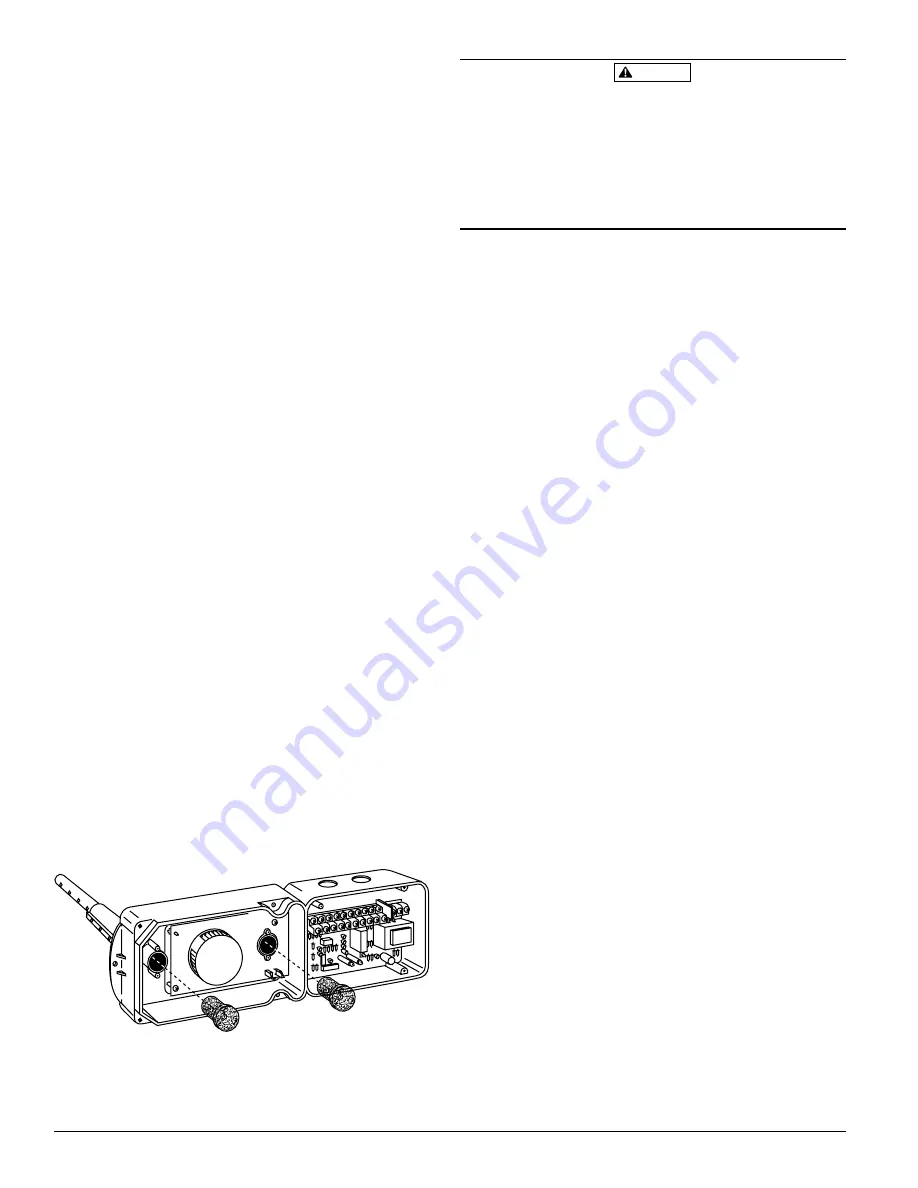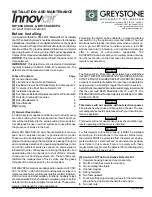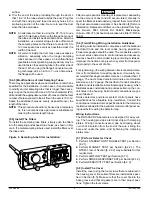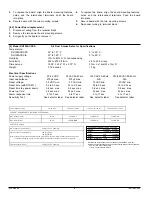
air flow.
4. Trim the end of the tube protruding through the duct so
that 1 to 2” of the tube extend outside the duct. Plug this
end with the end plug and tape closed any holes in the
protruding section of the tube. Be sure to seal the duct
when the tube protrudes.
NOTE: An alternate method to using the ST-10 is to use
two ST-5 inlet tubes. Remove the flange from one of
the tubes and install as described above. After the
installation, use electrical tape to close off some of
the sampling holes so that there are a total of 10 to
12 holes spaced as evenly as possible across the
width of the duct.
NOTE: Air currents inside the duct may cause excessive
vibration, especially when the longer sampling
tubes are used. In these cases a 3 inch floor flange
(available at most plumbing supply stores) may be
used to fasten the sampling tube to the other side of
the duct. When using the flange/connector mount-
ing technique, drill a 1-inch to 1
1
/
4
-inch hole where
the flange will be used.
[5.4.3] Modifications of Inlet Sampling Tubes
There may be applications where duct widths are not what is
specified for the installation. In such cases, it is permissible
to modify an inlet sampling tube that is longer than neces-
sary to span the duct width. Use a 0.193-inch diameter (#11)
drill and add the appropriate number of holes so that the total
number of holes exposed to the air flow in the duct is 10 to 12.
Space the additional holes as evenly as possible over the
length of the tube.
NOTE: This procedure should only be used as a temporary
fix. It is not intended as a permanent substitute for
ordering the correct length tubes.
[5.5] Install The Filters
To install the sampling tube filters, simply push the filters
into the sampling and exhaust tube holes, as shown in Fig-
ure 6. If a metal sampling tube is used, install the filters over
the tube ends.
Figure 6. Sampling tube filter installation:
CAUTION
Filters require periodic cleaning or replacement, depending
on the amount of dust and dirt accumulated. Visually in-
spect the filters at least quarterly; inspect them more often if
the dust accumulation warrants it. See Section [6] for more
information. Replacement filters can be ordered from Sys-
tem Sensor, 6581 Kitimat Rd. Unit#6, Mississauga,
Ontario, L5N 3T5 (Exhaust tube/intake tube filter P/N F36-
09-00)
[5.6] Field Wiring Wiring Installation Guidelines
All wiring must be installed in compliance with the National
Electrical Code and the local codes having jurisdiction.
Proper wire gauges should be used. The conductors used to
connect smoke detectors to control panels and accessory
devices should be color-coded to prevent wiring mistakes.
Improper connections can prevent a system from respond-
ing properly in the event of a fire.
For signal wiring, (the wiring between interconnected detec-
tors or from detectors to auxiliary devices), it is usually rec-
ommended that single conductor wire be no smaller than 18
gauge. The duct smoke detector terminals accommodate
wire sizes up to 12 gauge. The last foot of conduit should be
flexible conduit (available in electrical supply houses), which
facilitates easier installation and puts less strain on the con-
duit holes in the housing. Solid conduit connections may be
used if desired.
Smoke detectors and alarm system control panels have
specifications for allowable loop resistance. Consult the
control panel manufacturer’s specifications for the total loop
resistance allowed for the particular model control panel be-
ing used before wiring the detector loop.
Wiring Instructions
The DH100ACDCA detectors are designed for easy wir-
ing. The housing provides a terminal strip with clamping
plates. Wiring connections are made by stripping about
3
/
8
-inch of insulation from the end of the wire, sliding the
bare end under the plate, and tightening the clamping
plate screw.
[5.7] Perform Detector Check
1. Perform STANDBY AND TROUBLE TEST per Section
[6.2.1].
2. Perform MAGNET TEST per Section [6.2.2.1]. The
RTS451 test of Section [6.2.2.2] may substitute for this
requirement.
3. Perform AIR FLOW TEST per Section [6.1.1].
4. Perform SMOKE RESPONSE TEST per Section [6.1.2].
5. Perform SENSITIVITY TEST per Section [6.2.3].
[5.8] Install The Cover
Install the cover using the four screws that are captured in
the housing cover. Be certain filters are installed as speci-
fied in Section [5.5]. Make sure that the cover fits into the
base groove and that all gaskets are in their proper posi-
tions. Tighten the four screws.
D100-68-00
4
I56-1525-000
A78-2106-01


























